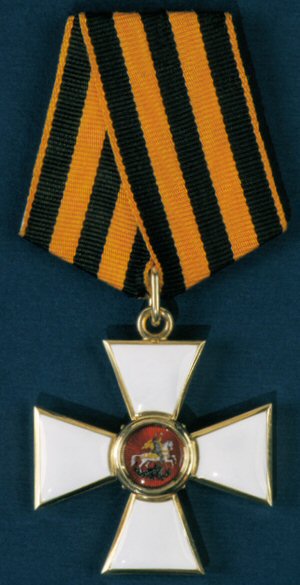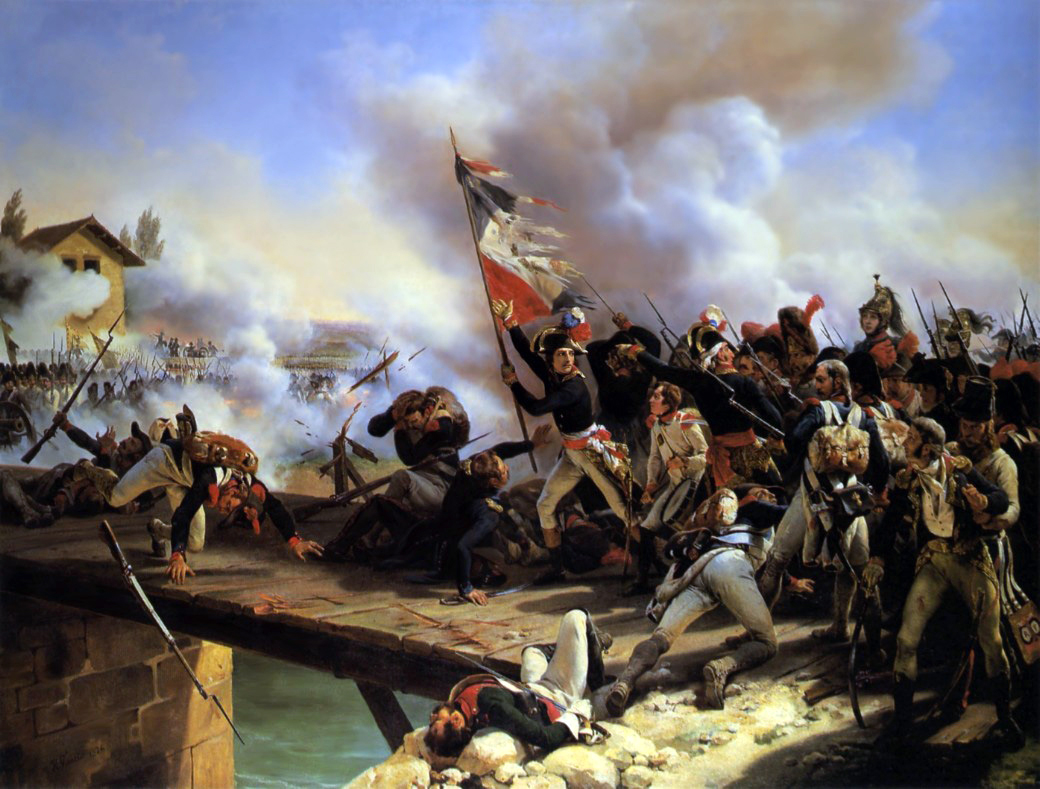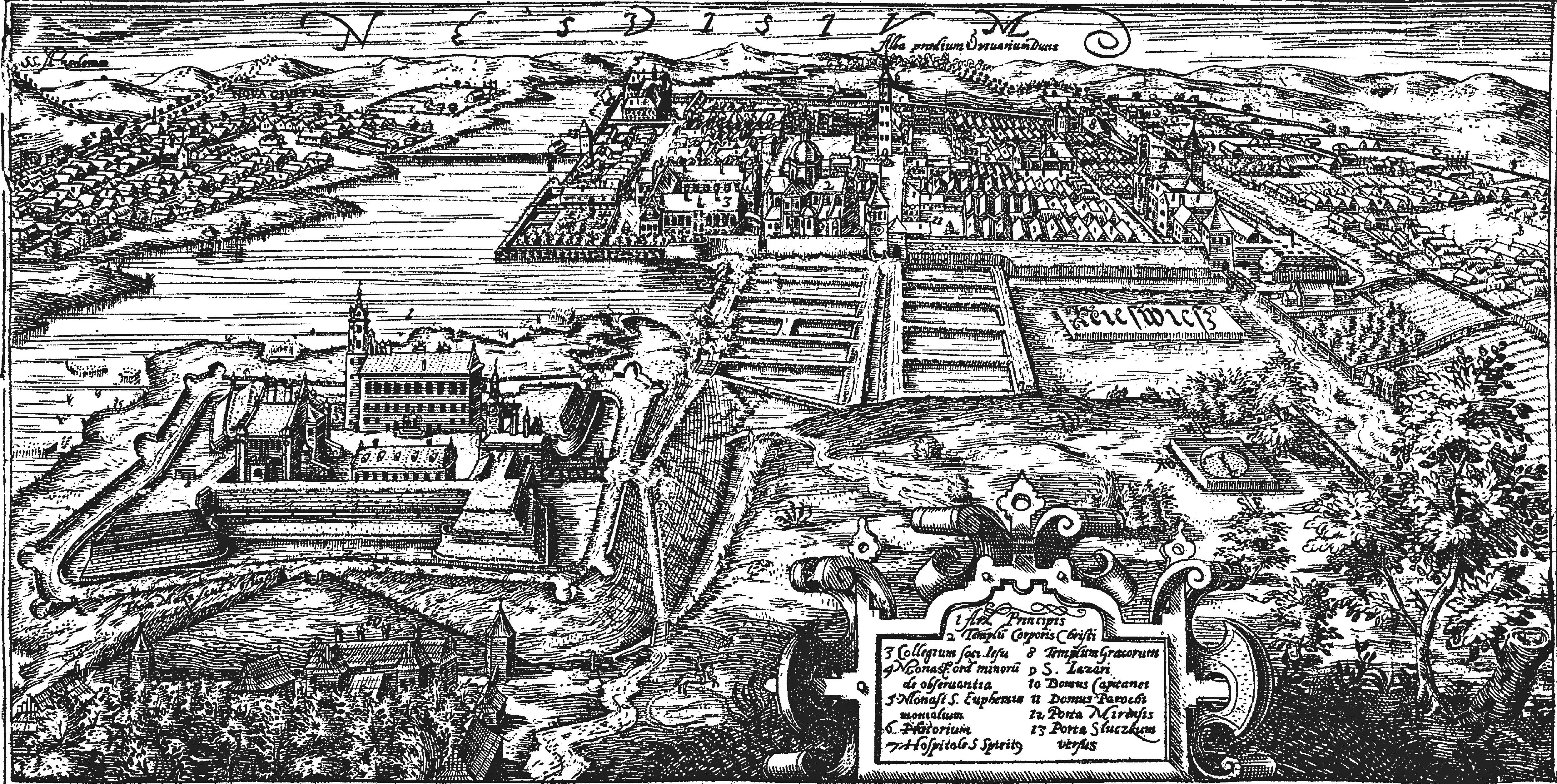|
Nikolay Arsenyev
Nikolay Dmitrievich Arsenyev (russian: Никола́й Дми́триевич Арсе́ньев; c. 1739 – 1796) was a major-general of the Russian Empire, who served during the reign of Catherine the Great (r. 1762–1796). He fought at the Russo-Turkish War of 1768-74, the Russo-Turkish War of 1787-92, the Polish–Russian War of 1792 as well as the Kościuszko Uprising. Career Nikolay Arsenyev was born around 1739, but according to Prof. Alexander Mikaberidze, the exact date of his birth is unclear. He started his military career in 1760, when he enlisted into the Preobrazhensky Regiment, one of the oldest guard/elite regiments of the Imperial Russian Army. Several years later, he would fight his first war, namely the Russo-Turkish War of 1768-74, and engaged at the battles of Kafa (1771) and Obashtu (1773). In 1780, he was promoted to colonel ('' polkovnik''), seven years later, in 1778, to brigadier, and lastly on 16 February 1790 to major general. During the Russo ... [...More Info...] [...Related Items...] OR: [Wikipedia] [Google] [Baidu] |
Imperial Russian Army
The Imperial Russian Army (russian: Ру́сская импера́торская а́рмия, tr. ) was the armed land force of the Russian Empire, active from around 1721 to the Russian Revolution of 1917. In the early 1850s, the Russian Army consisted of more than 900,000 regular soldiers and nearly 250,000 irregulars (mostly Cossacks). Precursors: Regiments of the New Order Russian tsars before Peter the Great maintained professional hereditary musketeer corps known as '' streltsy''. These were originally raised by Ivan the Terrible; originally an effective force, they had become highly unreliable and undisciplined. In times of war the armed forces were augmented by peasants. The regiments of the new order, or regiments of the foreign order (''Полки нового строя'' or ''Полки иноземного строя'', ''Polki novovo (inozemnovo) stroya''), was the Russian term that was used to describe military units that were formed in the Tsardom of Russi ... [...More Info...] [...Related Items...] OR: [Wikipedia] [Google] [Baidu] |
Order Of Saint George
The Order of Saint George (russian: Орден Святого Георгия, Orden Svyatogo Georgiya) is the highest military decoration of the Russian Federation. Originally established on 26 November 1769 Julian (7 December 1769 Gregorian) as the highest military decoration of the Russian Empire for commissioned officers and generals by Empress Catherine the Great.Hurley, C. ''Russian Orders, Decorations, and Medals Under the Monarchy''. Harrison & Sons., Ltd., London. 1935. After the October Revolution in 1917, it was awarded by the White movement under Alexander Kolchak until their collapse in 1921. The order was revived in the Russian Federation on 8 August 2000 by Decree №1463 of the President of Russia. The current award criteria were amended on 7 September 2010 by Presidential Decree 1099. Statute of the Order of St. George The current Order of Saint George is awarded to highest and senior military officers for the conduct of military operations to protect the M ... [...More Info...] [...Related Items...] OR: [Wikipedia] [Google] [Baidu] |
Russian People Of The Kościuszko Uprising
Russian(s) refers to anything related to Russia, including: *Russians (, ''russkiye''), an ethnic group of the East Slavic peoples, primarily living in Russia and neighboring countries *Rossiyane (), Russian language term for all citizens and people of Russia, regardless of ethnicity *Russophone, Russian-speaking person (, ''russkogovoryashchy'', ''russkoyazychny'') *Russian language, the most widely spoken of the Slavic languages *Russian alphabet *Russian cuisine *Russian culture *Russian studies Russian may also refer to: *Russian dressing *''The Russians'', a book by Hedrick Smith *Russian (comics), fictional Marvel Comics supervillain from ''The Punisher'' series *Russian (solitaire), a card game * "Russians" (song), from the album ''The Dream of the Blue Turtles'' by Sting *"Russian", from the album ''Tubular Bells 2003'' by Mike Oldfield *"Russian", from the album '' '' by Caravan Palace *Nik Russian, the perpetrator of a con committed in 2002 *The South African name for a ... [...More Info...] [...Related Items...] OR: [Wikipedia] [Google] [Baidu] |
Russian People Of The Polish–Russian War Of 1792
Russian(s) refers to anything related to Russia, including: *Russians (, ''russkiye''), an ethnic group of the East Slavic peoples, primarily living in Russia and neighboring countries *Rossiyane (), Russian language term for all citizens and people of Russia, regardless of ethnicity *Russophone, Russian-speaking person (, ''russkogovoryashchy'', ''russkoyazychny'') *Russian language, the most widely spoken of the Slavic languages *Russian alphabet *Russian cuisine *Russian culture *Russian studies Russian may also refer to: *Russian dressing *''The Russians'', a book by Hedrick Smith *Russian (comics), fictional Marvel Comics supervillain from ''The Punisher'' series *Russian (solitaire), a card game * "Russians" (song), from the album ''The Dream of the Blue Turtles'' by Sting *"Russian", from the album ''Tubular Bells 2003'' by Mike Oldfield *"Russian", from the album '' '' by Caravan Palace *Nik Russian, the perpetrator of a con committed in 2002 *The South African name for a ... [...More Info...] [...Related Items...] OR: [Wikipedia] [Google] [Baidu] |
Imperial Russian Major Generals
Imperial is that which relates to an empire, emperor, or imperialism. Imperial or The Imperial may also refer to: Places United States * Imperial, California * Imperial, Missouri * Imperial, Nebraska * Imperial, Pennsylvania * Imperial, Texas * Imperial, West Virginia * Imperial, Virginia * Imperial County, California * Imperial Valley, California * Imperial Beach, California Elsewhere * Imperial (Madrid), an administrative neighborhood in Spain * Imperial, Saskatchewan, a town in Canada Buildings * Imperial Apartments, a building in Brooklyn, New York * Imperial City, Huế, a palace in Huế, Vietnam * Imperial Palace (other) * Imperial Towers, a group of lighthouses on Lake Huron, Canada * The Imperial (Mumbai), a skyscraper apartment complex in India Animals and plants * ''Cheritra'' or imperial, a genus of butterfly Architecture, design, and fashion * Imperial, a luggage case for the top of a coach * Imperial, the top, roof or second-storey compartment of a ... [...More Info...] [...Related Items...] OR: [Wikipedia] [Google] [Baidu] |
1796 Deaths
Events January–March * January 16 – The first Dutch (and general) elections are held for the National Assembly of the Batavian Republic. (The next Dutch general elections are held in 1888.) * February 1 – The capital of Upper Canada is moved from Newark to York. * February 9 – The Qianlong Emperor of China abdicates at age 84 to make way for his son, the Jiaqing Emperor. * February 15 – French Revolutionary Wars: The Invasion of Ceylon (1795) ends when Johan van Angelbeek, the Batavian governor of Ceylon, surrenders Colombo peacefully to British forces. * February 16 – The Kingdom of Great Britain is granted control of Ceylon by the Dutch. * February 29 – Ratifications of the Jay Treaty between Great Britain and the United States are officially exchanged, bringing it into effect.''Harper's Encyclopaedia of United States History from 458 A. D. to 1909'', ed. by Benson John Lossing and, Woodrow Wilson (Harper & Brothers, 1910) p17 ... [...More Info...] [...Related Items...] OR: [Wikipedia] [Google] [Baidu] |
1739 Births
Events January–March * January 1 – Bouvet Island is discovered by French explorer Jean-Baptiste Charles Bouvet de Lozier, in the South Atlantic Ocean. * January 3: A 7.6 earthquake shakes the Ningxia Hui Autonomous Region in China killing 50,000 people. * February 24 – Battle of Karnal: The army of Iranian ruler Nader Shah defeats the forces of the Mughal emperor of India, Muhammad Shah. * March 20 – Nader Shah occupies Delhi, India and sacks the city, stealing the jewels of the Peacock Throne, including the Koh-i-Noor. April–June * April 7 – English highwayman Dick Turpin is executed by hanging for horse theft. * May 12 – John Wesley lays the foundation stone of the New Room, Bristol in England, the world's first Methodist meeting house. * June 13 – (June 2 Old Style); The Royal Swedish Academy of Sciences is founded in Stockholm, Sweden. July–September * July 9 – The first group purporting ... [...More Info...] [...Related Items...] OR: [Wikipedia] [Google] [Baidu] |
Order Of Saint Vladimir
The Imperial Order of Saint Prince Vladimir (russian: орден Святого Владимира) was an Imperial Russian order established on by Empress Catherine II in memory of the deeds of Saint Vladimir, the Grand Prince and the Baptizer of the Kievan Rus'. Grades The order had four degrees and was awarded for continuous civil and military service. People who had been awarded with the St. Vladimir Order for military merits bore it with a special fold on the ribbon – "with a bow". There was a certain hierarchy of Russian Orders. According to this, the First Class Order of Saint Vladimir was the second one—the first was the Saint George Order—by its significance. According to Russian laws on nobility, people who were awarded the Order of Saint Vladimir had the rights of hereditary nobility until the Emperor's decree of 1900 was issued. After this, only three first classes of the order gave such a right, the last one granting only personal nobility. Today, G ... [...More Info...] [...Related Items...] OR: [Wikipedia] [Google] [Baidu] |
Brest-Litovsk
Brest ( be, Брэст / Берасьце, Bieraście, ; russian: Брест, ; uk, Берестя, Berestia; lt, Brasta; pl, Brześć; yi, בריסק, Brisk), formerly Brest-Litovsk (russian: Брест-Литовск, lit=Lithuanian Brest; be, links=no, translit=Berastze Litouski (Berastze), Берасце Літоўскі (Берасце); lt, links=no, Lietuvos Brasta; pl, links=no, Brześć Litewski, ), Brest-on-the-Bug ( pl, links=no, Brześć nad Bugiem), is a city (population 350,616 in 2019) in Belarus at the border with Poland opposite the Polish city of Terespol, where the Bug (river), Bug and Mukhavets rivers meet, making it a border town. It is the capital city of the Brest Region. Brest is a historical site for many cultures, as it hosted important historical events, such as the Union of Brest and Treaty of Brest-Litovsk. Furthermore, the Brest Fortress was recognized by the Soviet Union as a Hero Fortress in honour of the defense of Brest Fortress in Jun ... [...More Info...] [...Related Items...] OR: [Wikipedia] [Google] [Baidu] |
Slutsk
Slutsk ( officially transliterated as Sluck, be, Слуцк; russian: Слуцк; pl, Słuck, lt, Sluckas, Yiddish/Hebrew: סלוצק ''Slutsk'') is a city in Belarus, located on the Sluch River south of Minsk. As of 2022, its population is 61,802. Slutsk is the administrative center of Slutsk District. Geography The city is situated in the south-west of its Region, north of Soligorsk. History Slutsk was first mentioned in writing in 1116. It was part of the Principality of Turov and Pinsk, but in 1160 it became the capital of a separate principality. From 1320–1330 it was part of the domain of the Grand Duchy of Lithuania. Later it was owned by the Olelkovich and Radziwiłł families, which transformed it into a center of the Polish Reformed Church with a gymnasium and a strong fortress. Following the 17th century, the city became famous for manufacturing kontusz belts, some of the most expensive and luxurious pieces of garment of the szlachta. Because of the popula ... [...More Info...] [...Related Items...] OR: [Wikipedia] [Google] [Baidu] |
Nesvizh
Nesvizh, Niasviž ( be, Нясві́ж ; lt, Nesvyžius; pl, Nieśwież; russian: Не́свиж; yi, ניעסוויז; la, Nesvisium) is a city in Belarus. It is the administrative centre of the Nyasvizh District (''rajon'') of Minsk Region and site of Niasviž Castle, a World Heritage Site. Its 2009 population is 14,300. History Nesvizh was first documented in 1223. It was part of the Grand Duchy of Lithuania until 1793, but the Grand Duchy was part of the Polish–Lithuanian Commonwealth since 1569. In the 15th century, while still a minor town, it belonged to the Kiszka family and later to the Radziwiłł family, and remained the family's seat until 1813. In 1561 or 1562 Maciej Kawęczyński founded the print works of the Polish Brethren. The first Belarusian language book printed in Latin script, a catechism by Symon Budny, was published in Nesvizh in 1562. The ''Nieśwież Bible'' ('' Biblia nieświeska''), one of the oldest Polish translations of the Bible, also by ... [...More Info...] [...Related Items...] OR: [Wikipedia] [Google] [Baidu] |
Polish–Lithuanian Commonwealth
The Polish–Lithuanian Commonwealth, formally known as the Kingdom of Poland and the Grand Duchy of Lithuania, and, after 1791, as the Commonwealth of Poland, was a bi-confederal state, sometimes called a federation, of Crown of the Kingdom of Poland, Poland and Grand Duchy of Lithuania, Lithuania ruled by a common Monarchy, monarch in real union, who was both King of Poland and List of Lithuanian monarchs, Grand Duke of Lithuania. It was one of the largest and most populous countries of 16th- to 17th-century Europe. At its largest territorial extent, in the early 17th century, the Commonwealth covered almost and as of 1618 sustained a multi-ethnic population of almost 12 million. Polish language, Polish and Latin were the two co-official languages. The Commonwealth was established by the Union of Lublin in July 1569, but the Crown of the Kingdom of Poland and the Grand Duchy of Lithuania had been in a ''de facto'' personal union since 1386 with the marriage of the Polish ... [...More Info...] [...Related Items...] OR: [Wikipedia] [Google] [Baidu] |






